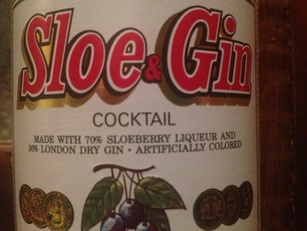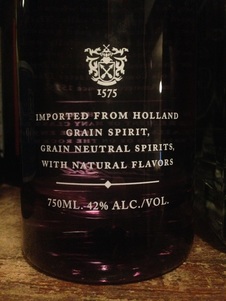 The How? In this blog I highlight the ‘how’ in relation to the label and how it describes what’s inside. I won’t be going into the depths of how the distilling process works. I will talk about things distillers may do during their processes to make their spirit look a certain way or have a certain flavor. Again, I want to highlight these things because they not only tell the story of your spirit, but also help you make an informed bottled selection. Color: Usually, when we talk about color, we’re speaking about brown spirits. These spirits typically develop their colors from the barrel during the aging process. However, some distillers that produce spirits that don’t age very long may add color in other ways such as through use of caramel or an artificial coloring. This may be specified on the label as such: “COLORED WITH CARAMEL” “CERTIFIED COLOR ADDED” It is important to note that the use or addition of any coloring, flavoring or blending material may change the class of spirit. For example, if FD&C Yellow is added to straight bourbon, the spirit is no longer classed as ‘straight bourbon whiskey’; it becomes a ‘spirits specialty’ class and MUST BE LABELED with a statement such as: “STRAIGHT BOURBON WHISKY WITH FD&C YELLOW #5 ADDED” For this particular addition, it must appear on the FRONT of the label. There are a few coloring materials considered ‘harmless’ and therefore may be used in a small specified amount without having to appear on the label. Treatment with Wood: Another method to add color and taste to a young whisky would be to color and flavor with wood. The wood typically is in the form of chips, slabs or extracts. If this method is used, a statement something like this is required to appear on the FRONT of the label: “COLORED AND FLAVORED WITH WOOD CHIPS” This applies only to whisky and brandy treated with wood (other than the contact with their oak aging barrels) at ANY POINT during the production and storage process and up to and including the time of bottling.  Flavoring Materials Flavoring materials can include anything from essential oils to herbs, spices and fruit juices. However, all flavoring materials used in alcoholic beverages must be approved by or affirmed as GRAS (generally recognized as safe) by FDA. In addition for labeling purposes, all flavoring materials are categorized as ALL NATURAL or NATURAL AND ARTIFICIAL or ALL ARTIFICIAL. Blending Materials Blending materials include wine and sugar. Different rules apply to different spirits with regard to what volume used would be considered ‘harmless’. Harmless coloring, flavoring and blending materials are any materials that are an essential component of the particular class/type of distilled spirit or any materials that are not essential but are customarily used and do not exceed 2.5% by volume of the finished product. There is a great chart in the Department of the Treasury Alcohol & Tobacco Tax & Trade Bureau’s (TTB) ‘The Beverage and Alcohol Manual (BAM). Follow this link to see the chart online: Use of Harmless Coloring/Flavoring/Blending Materials. This chart describes:
If you missed the first two blogs, or want to refresh your memory, you can check them out here: Unlocking the Liquor Bottle Label Language | Part One of Four Unlocking the Liquor Bottle Label Language | Part Two of Four Watch for the next blog, ‘The When’, where I’ll talk a little bit about the aging process of a spirit. |
Sarah Beach
Co-founder of Murray's Fools Distilling Co. | Altona, NY Categories
All
Archives
September 2019
|


 RSS Feed
RSS Feed